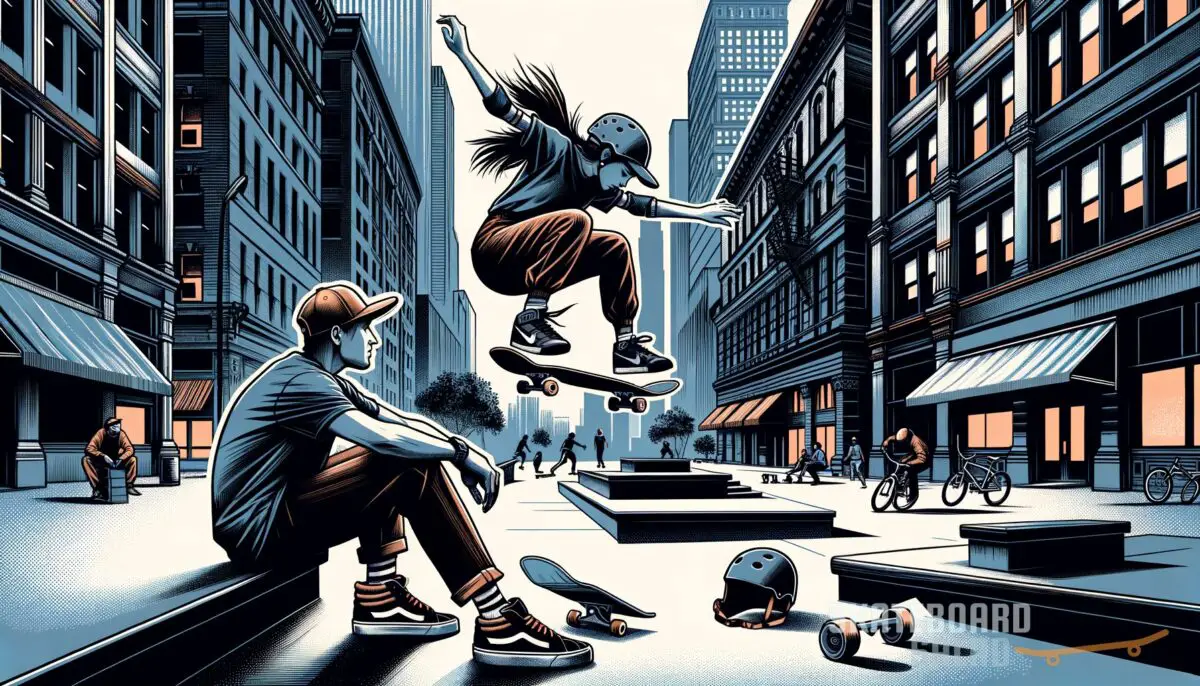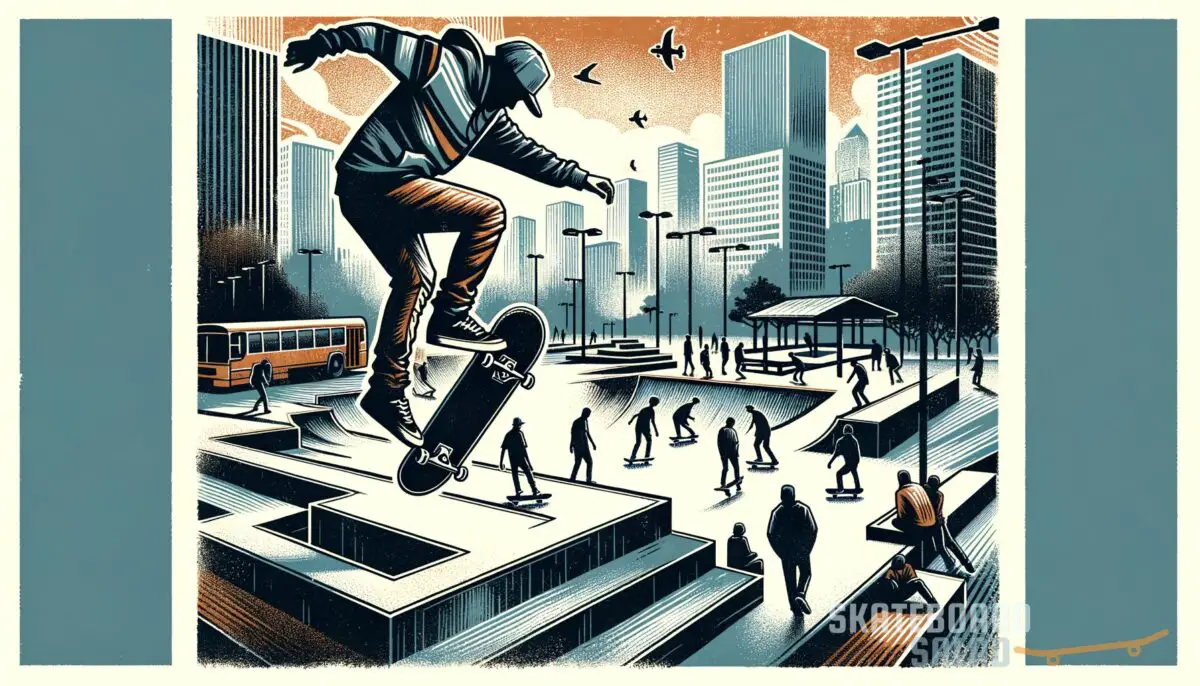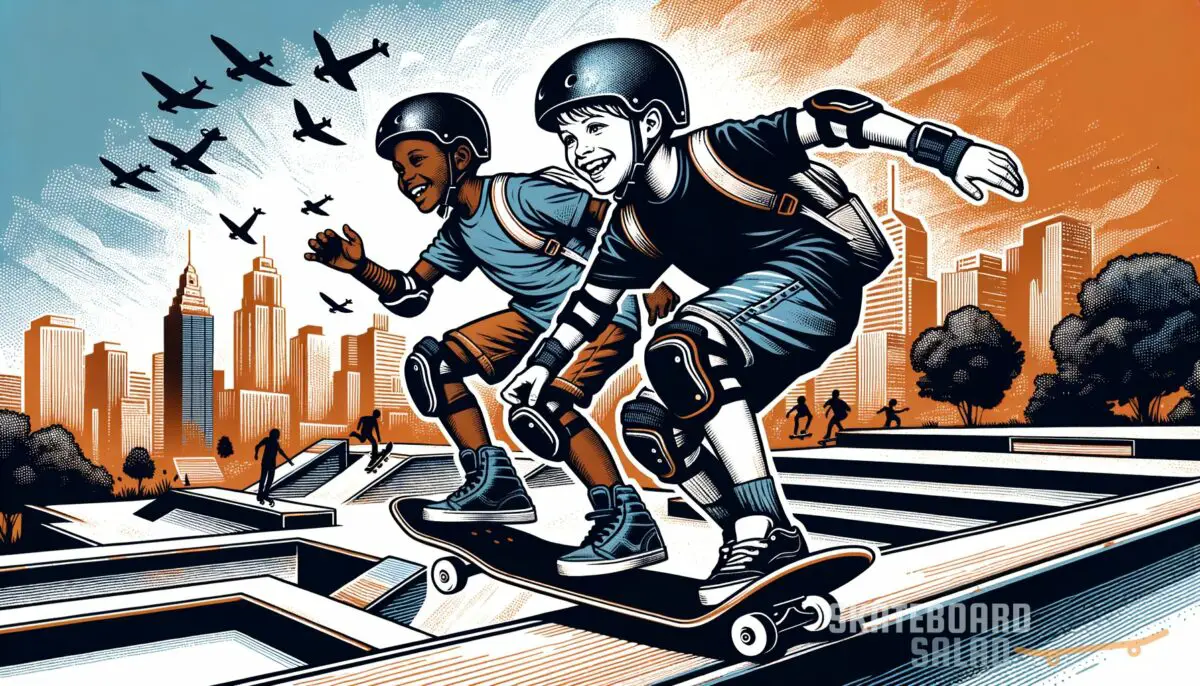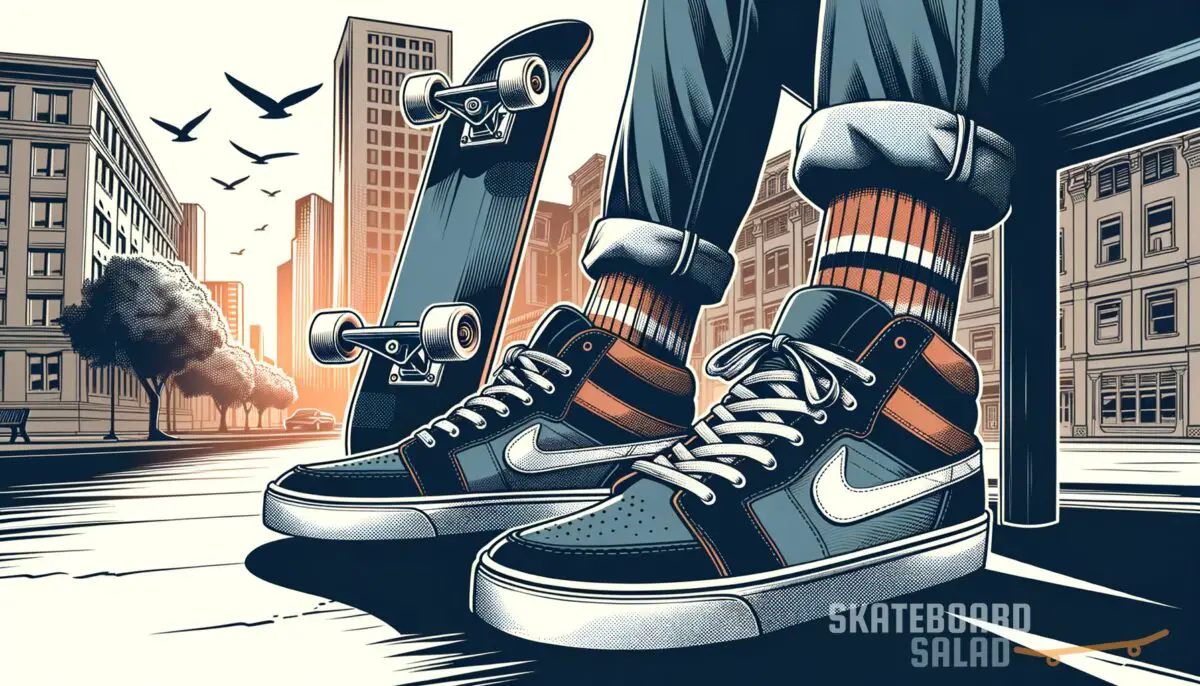Skaters heatedly debate on what slays the concrete waves best, and it’s no surprise they’ll throw down over decks and kicks tougher than a Nollie Hardflip. Striking the perfect harmony between a board and its rider isn’t just about preference; it’s about shredding with confidence and style. Take a look at the prime skateboard decks making waves in street skating.
Why does your deck choice matter? In this post, we’ll uncover the essentials that transform an average skateboard into your ride-or-die.
Key takeaways
- Match your trucks to your deck width for optimal control and performance.
- Choose wheel size and hardness based on how and where you skate for the best experience.
- Maintain your skateboard well, including clean griptape, for safety and longevity.
What makes a good skateboard
Dialing in on what elevates a skateboard from good to great starts with a trifecta: deck, trucks, and wheels. A top-notch deck serves as the foundation – it’s got to have the right pop, durability, and size to fit your style. For the grinders and rail-seekers, sturdy trucks are non-negotiable; they dictate your turn responsiveness and grind precision.
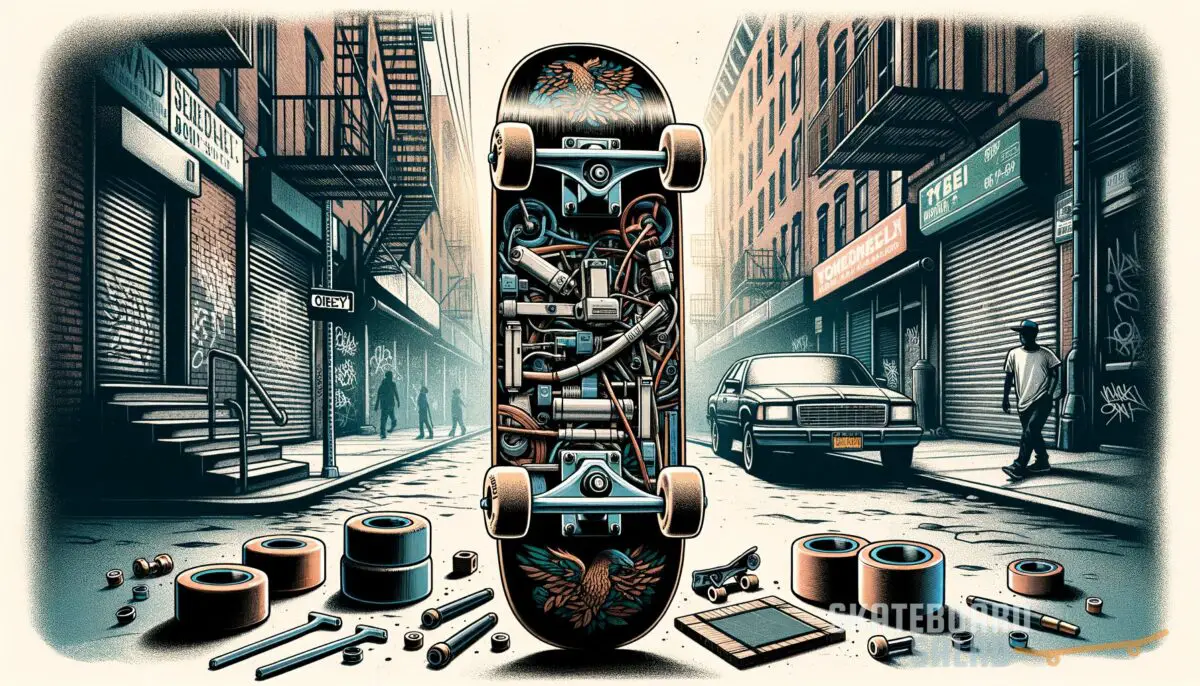
Then come the wheels – the wrong set can have you bailing more than skating.
Enthusiasts understand that a skateboard isn’t just a plank with wheels; it’s a synergy of components fine-tuned to the skater’s needs. Whether you’re slicing through street spots or dropping into vert ramps, a tailored setup can mean the difference between sticking a landing or eating the pavement. The truth is, a good skateboard matches your discipline, be it street, park, or transition, and supports your growth as a skater.
Ultimately, beyond the personal flair you bring to the table, your skateboard is a blend of craft and technology. Seasoned skaters might argue for hours about the supremacy of bushing’s durometer or the concave’s curve, but what truly makes a skateboard excellent is how it complements your riding technique and skater’s spirit.
“Investing in quality components for longevity can be the difference between a setup that’s a fleeting affair and one that’s a long-term commitment. Remember, a smart setup is not just about aesthetics; it’s about performance, progression, and personal expression on the streets and ramps.”
Here’s a roundup of the essentials that contribute to revered rigs among skaters:
- Deck’s shape and concave for that sweet flip control
- Trucks adjusted for your skate discipline – stability for street, responsiveness for ramps
- Wheel size and durometer that suit your terrain and style
- Bearings that spin like they’ve got a point to prove
- Griptape that holds your sneakers like they’re glued on
Each element plays into creating a ride that’s a seamless extension of yourself – that’s the hallmark of a quality board. And if you’re curious about the van debate, I’ve got info on why some kicks are more suited to skateboarding than others. Let’s dive in and dissect the anatomy of an ideal ride.
Enjoi Whitey Panda Skateboard Deck

Enjoi Whitey Panda Skateboard Deck
Skateboard anatomy 101
Before diving into specifics, let’s understand the anatomy of a skateboard. A skateboard comprises four main parts: the deck, trucks, wheels, and bearings. Each component plays its part in ensuring a smooth ride.
The deck, made of layers of pressed maple, is the flat board you stand on. The trucks, attached to the deck’s underside, hold the wheels in place and allow for turns. Wheels come in various sizes and hardness, affecting speed and grip, while bearings inside the wheels reduce friction.
Deck dimensions and material
A good skateboard begins with a solid deck. The size matters – it should match the skater’s shoe size and height for comfortable footing. Quality maple wood is a staple, providing both flexibility and durability for that consistent pop when you’re ollieing stair sets.
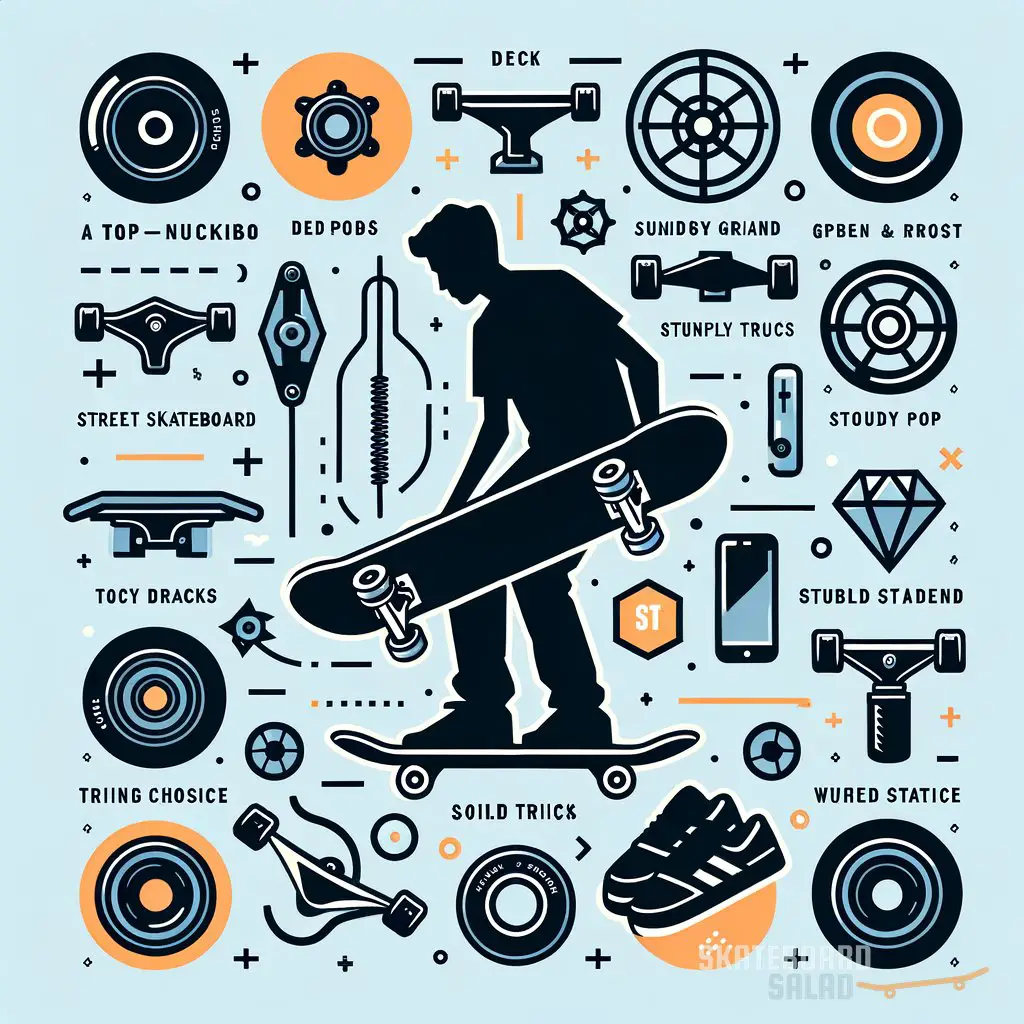
Don’t forget the concave; a deeper one can mean better control for tricks.
- The importance of deck concave
- Choosing the right deck size and material
Trucks that turn and grind
Next up are trucks; they are critical for maneuverability and stability. You’ll want to match truck width to your deck for optimal performance. Higher trucks are suitable for bigger wheels, avoiding wheelbite during sharp turns, while low trucks are ideal for street skating with smaller wheels.
Plus, the bushings within the trucks modify how much give your turns have – essential for those tight carves.
- Matching truck width to deck size
- High vs. low trucks: finding your fit
Wheels: Size does matter
Wheels can make or break your skate experience. Smaller wheels accelerate faster, perfect for technical street skating, while larger ones maintain speed, ideal for cruising and vert ramps. The hardness or durometer also plays a role; softer wheels grip better, and harder wheels slide more, essential for different skating styles.
- Wheel size and its impact on skateboarding
- Understanding wheel durometer
Bearings for speed and longevity
Bearings don’t get enough credit, but without them, your wheels wouldn’t spin. They’re rated by the ABEC scale; higher ratings tend to mean more precision and efficiency in speed. But for skateboarding, durability usually trumps precision, so look for skate-specific bearings that can take a beating.
- ABEC ratings and what they mean
- Selecting durable skate bearings
Griptape for stickiness
Griptape
is the sandpaper-like layer on top of your deck. It’s there for traction, so your feet don’t slip off. The texture, grip, and durability matter here – the right griptape lets you catch those kickflips and land with confidence.
- Choosing griptape for the ultimate hold
- Griptape maintenance for lasting grip
Entry-level vs. Custom builds
When you’re just starting out, a pre-built skateboard can be a great way to go. However, as you advance, custom building your board piece by piece becomes a thrilling journey. It lets you tailor your setup to your exact needs and truly understand what makes a good skateboard for you.
- Benefits of a pre-built skateboard
- Customizing your skateboard setup
Brand reputation and legacy
With many brands out there, the reputation for quality can be a decision-maker. Some brands have been in the game for decades, forming the bedrock of skate culture. They don’t just sell boards; they contribute to the sport’s legacy.
Choose brands known for their quality and community contributions.
- Top skateboard brands in the industry
- Brand’s role in skate culture
Sustainability in skateboarding
Sustainability is becoming more relevant, and eco-friendly materials are gaining ground. Some companies focus on reducing environmental impact with recycled materials or sustainable wood. This choice doesn’t just reflect on the quality of the board but also the quality of your values.
- Advances in eco-friendly skateboarding gear
- Choosing brands that value sustainability
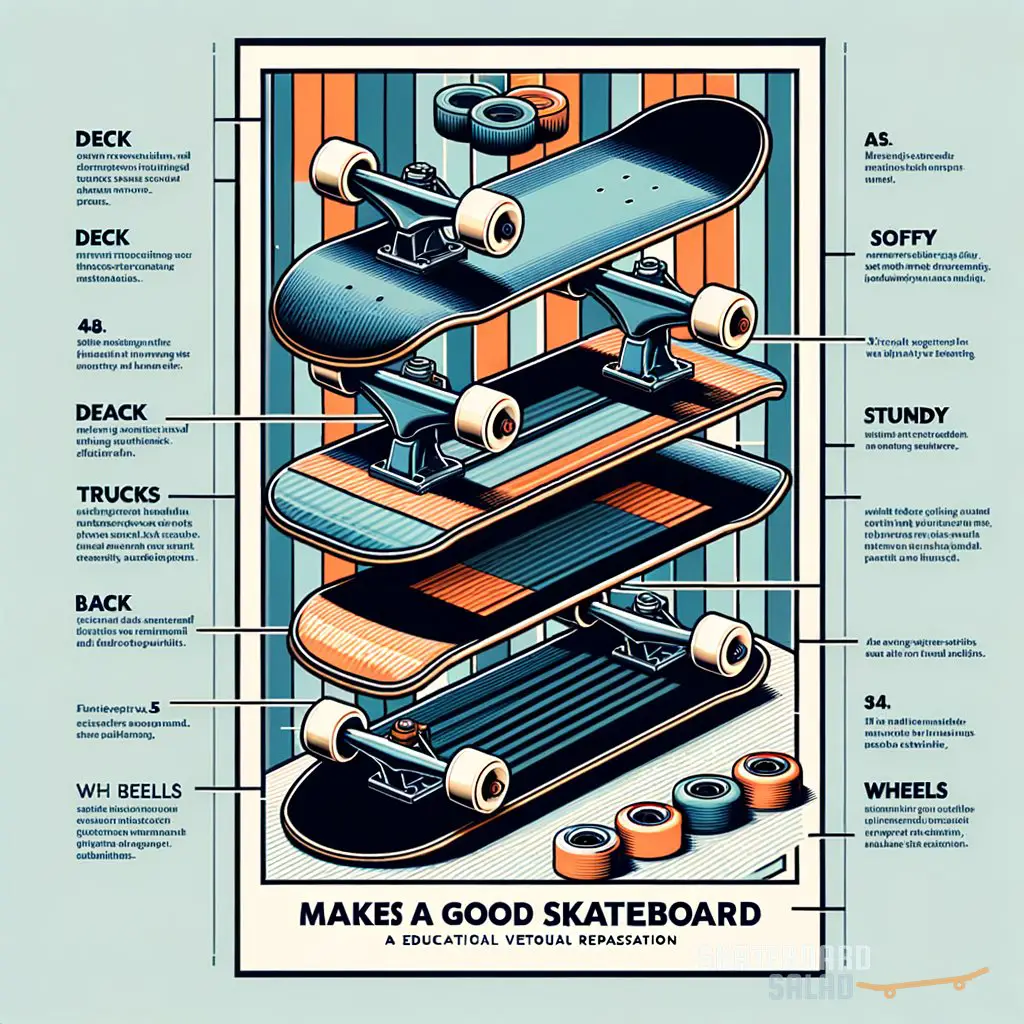
Style and design
A skateboard’s design isn’t all about aesthetics; it can be closely tied to the brand ethos and skater identity. Whether it’s a classic graphic or a limited-edition artist collaboration, a distinctive design can make your setup stand out at the skatepark.
- Skateboard graphics and their significance
- How design reflects your skating style
Price and budget considerations
Price is always a factor, but don’t skimp on your skateboard. A cheap board may save you money upfront but cost you more in the long run with frequent replacements. Still, there are cost-effective options that don’t compromise quality for those on a tighter budget.
- Balancing cost and quality
- Finding value in skateboard components
This data table consolidates the key aspects to consider when selecting skateboard components, outlining the ideal features for various skate styles.
| Component | Ideal Feature | Skate Style |
|---|---|---|
| Deck | Proper size and concave | All |
| Trucks | Width matches deck, right height | Street, Vert |
| Wheels | Size and hardness tailored | Street, Cruising, Vert |
| Bearings | Durability over precision | All |
| Griptape | Quality grip and texture | All |
When building the ideal skateboard, it’s crucial to balance these components for your unique style. Making informed choices leads to better performance and a more enjoyable skating experience.
In the world of skateboarding, getting your setup just right can make a world of difference between nailing a trick or taking a nasty slam. To steer clear from the latter, here’s a handy table to keep you on the right track, highlighting the dos and don’ts that every skater should engrave into their memory.
| Do | Don’t |
|---|---|
| Do match your trucks to your deck width | Don’t use mismatched truck and deck sizes |
| Do choose wheels based on your skate style | Don’t pick wheels solely on appearance |
| Do select durable, skate-specific bearings | Don’t go for the highest ABEC rating without considering durability |
| Do keep your griptape clean for optimal traction | Don’t ignore worn-out griptape that can lead to slipping |
| Do invest in quality components for longevity | Don’t compromise on quality for cheaper alternatives |
Remember, a smart setup is the key to progression and safety in skateboarding. Keep these pointers in mind as you build and maintain your skateboard for the best riding experience.
In my opinion, even if you’re not a skating pro, understanding the components of a good skateboard can significantly impact your riding experience. It’s about finding that sweet balance between what your heart wants and what the streets demand. Evaluating parts like trucks and wheels isn’t just about stats; it’s about feeling the ride under your feet.
When I was starting on transitions, I experimented a lot, and it taught me the value of trial and error. Besides, it’s always cool to roll into the park knowing your board is dialed in just right. Plus, skaters tend to respect those who respect their gear.
It’s a culture thing, and even skate newbies should catch that vibe early on. For more about skate culture, check out the best skateboard documentaries that really dive deep into what skating’s all about.
If you are a visual learner, check out this video titled ‘How to Pick the BEST Skateboard Setup Possible!’
Frequently asked questions (FAQ)
What is the optimal skateboard size for a beginner? For beginners, a mid-sized deck, around 7.5 to 8 inches wide, is generally recommended. It offers enough surface area for stability while learning basics and is versatile enough for both street and ramp skating.
Can skateboard wheels be too hard or too soft? Yes, the hardness of skateboard wheels, measured in durometer, affects performance. Too hard, and you may slip on slick surfaces; too soft, and you’ll find it hard to pick up speed on rough surfaces.
Choose a durometer that complements your main skate terrain.
How usually should you replace your skateboard? There’s no set time frame for replacing your skateboard; it comes down to how it feels when you ride. If the pop’s gone, if it feels soggy on landings, or if you’re getting too many wheel bites, it might be time to consider a new setup.
Final thoughts
As your ride thrums beneath your feet, remember it’s not just any board; it’s a vessel for your skating soul. Good skateboards don’t just happen. They’re built with intention, suited to your style, and maintained with care.
Whether you’re about to land your first kickflip or grinding rails like a pro, choosing the right components can make or break your skate experience. So, hit the pavement with a setup that’s got your back, and keep pushing the boundaries of what you can do.
What’s your go-to skateboard setup, and how has it evolved with your style? Did I cover everything you wanted to know? Let me know in the comments section belowI read and reply to every comment. If you found this article helpful, share it with a friend, and check out my full blog for more tips and tricks on skateboarding. Thanks for reading, and keep shredding!



